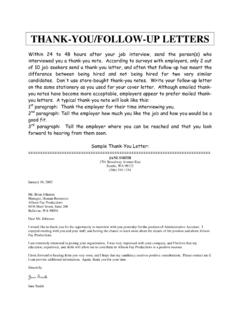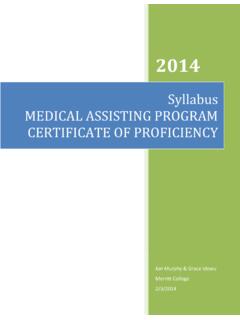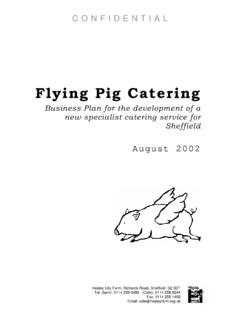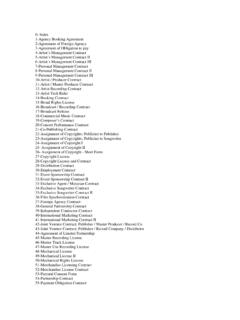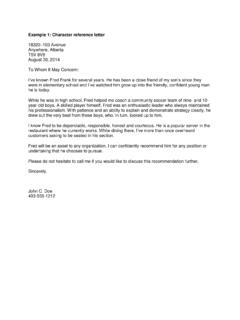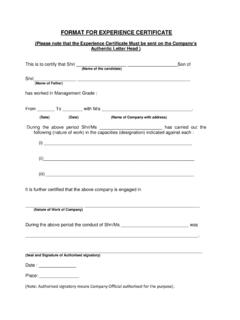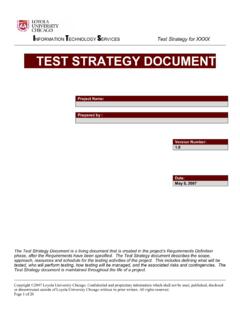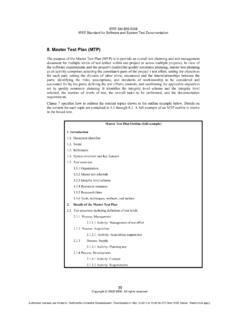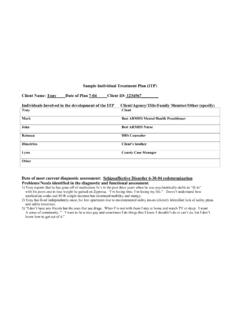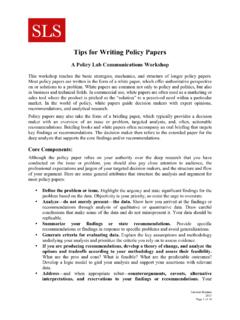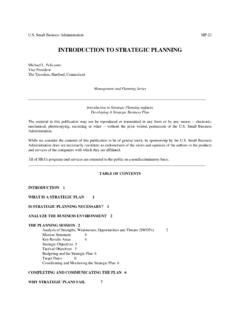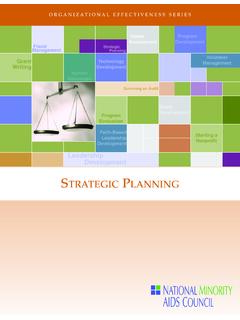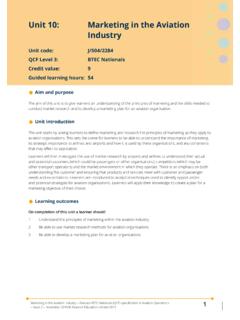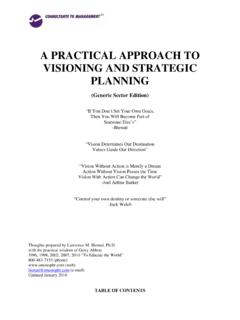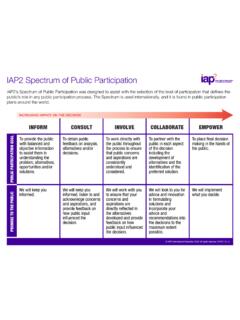Transcription of TRAINING & DEVELOPMENT TOOLKIT
1 TRAINING & DEVELOPMENT TOOLKIT 1 ABOUT THIS TOOLKIT The DEVELOPMENT of people s performance in the workplace is critical to the success of your organisation. The TRAINING & DEVELOPMENT (T&D) process has the potential to make a strong positive impact on the performance of individuals, teams and the business as a whole. This TOOLKIT is designed as a step-by-step aid to TRAINING and DEVELOPMENT Practitioners and anyone with responsibility for TRAINING within organisations. It will support you in developing and implementing successful TRAINING Policies & Procedures which are aligned with the Business Strategy and Objectives.
2 The steps and stages in the TRAINING & DEVELOPMENT process are outlined along with practical tips and tools for you to use when implementing in your organisation. If you follow the stages outlined and complete the suggested exercises*, you will have in place all the foundations for a successful TRAINING & DEVELOPMENT Strategy and Plan for your business. * All indicated by the icon CONTENT TRAINING and DEVELOPMENT Why Train? Stages of the TRAINING & DEVELOPMENT Process Business Plan TRAINING & DEVELOPMENT Policy & Strategy Mission Objectives Policy & Procedures swot analysis of T&D Environment TRAINING & DEVELOPMENT Needs analysis Tools & methods for identifying TRAINING needs TRAINING Needs analysis Diagnostics Snaking Thomas International System The Meta Planning Technique TRAINING & DEVELOPMENT Plan Implementation of TRAINING & DEVELOPMENT ACTION 2 Evaluating TRAINING Level 1 - 4 References Appendices: 1.
3 T&D Policy & Procedures Tool 2. T&D Needs analysis Tool 1 3. T&D Needs analysis Tool 2 4. T&D Plan Tool 5. Sample Level 1 Evaluation Forms 3 TRAINING & DEVELOPMENT In order to convincingly advocate the benefits of TRAINING to the management & staff of your company, it is essential that they understand the positive role that it can play in improving organisational performance. Ensuring good performance of individuals and teams is central to the work of the TRAINING & DEVELOPMENT function. In order to do this a planned approach is necessary. The activities of the TRAINING & DEVELOPMENT function must be closely linked to the overall business plan.
4 The impact T&D activity is meant to have on performance must be clearly defined and will communicated. To be successful T&D activities must be supported by wider T&D Policies and Procedures. TRAINING Vs DEVELOPMENT : TRAINING needs should be based on immediate needs for changes in behaviour. The long range DEVELOPMENT goals should be based on the acquisition of knowledge and skills to be used in the present as well as in the future. DEVELOPMENT looks down the road, and addresses helping people meet challenges, create change and ensure the success of the organisation in the future. WHY TRAIN? ACTION To ensure that the TRAINING initiative you embark upon makes a real impact, brainstorm your team's ideas on the impact of TRAINING under these 3 headings.
5 1. Saving Time 2. Saving Money 3. Saving Effort It is important that the TRAINING manager is clear about the answers to these questions and is open to any other possible benefits which the team might suggest. These responses should help shape the design of any subsequent TRAINING interventions and send out a message to management and employees that investment in TRAINING can result in real and tangible benefits to all stakeholders. The following are a number of such benefits which can emerge from effective TRAINING :- Benefits to the Company: 1 Increased productivity and profitability. 2 Raised standards of performance.
6 3 Expansion of the business. 4 Increased cash turnover. 5 Maximisation of resources/greater efficiency. 6 Reduced waste. 4 7 Reduction in complaints. 8 Helps recruitment. 9 Lowers staff turnover. 10 Aids succession planning. Benefits to Staff: 1 Shared work load. 2 Better team work. 3 Reduced overload. 4 Increased job satisfaction. 5 Better morale. 6 Greater professional and personal DEVELOPMENT . Benefits to Customer:- 1 They know what to expect 2 Clearer brand association 3 More efficient, reliable service. 4 Less cause for complaint STAGES IN THE TRAINING & DEVELOPMENT PROCESS: The following is the sequence of steps towards achieving a TRAINING system which can meet the needs of your company.
7 Evaluation of TRAINING TRAINING Strategy & Policy Business Plan Implementa-tion Of TRAINING TRAINING Plan TRAINING Needs analysis 5 ESTABLISH THE BUSINESS PLAN The Mission Statement represents the compass of the Company at the strategic level. It provides direction and clarity on where the team or company should be going and what is important on the journey. It outlines the business aims, who the customers are, what their products and services are and what distinguishes their business from competitors. The Business Plan of a company is essentially an amalgamation of all plans from each department, or section (depending on the organisational structure).
8 These plans should span all areas of the operation from production, to purchasing, marketing, subscriptions, finance and so forth. The TRAINING department must be fully conversant with these plans in order that it can subsequently produce a TRAINING plan which will facilitate their attainment. Close liaison in planning with managers responsible for those respective areas is essential. ESTABLISH A TRAINING & DEVELOPMENT STRATEGY & POLICY A TRAINING strategy is an outline of how you propose to achieve what you have decided and is central to the success of the TRAINING function within your organisation. It must take into account the calibre of the particular organisation as well as the external environment in which the company operates.
9 The three components of TRAINING strategies are as follows:- 1 The T&D Mission. 2 The T&D Objectives/Goals. 3 The T&D Policy Procedures. Examples of these are as follows:- - T&D Mission This should summarise what the TRAINING department is about, as well as what direction it is going in and, most importantly, it should reflect the corporate mission statement. It should include the higher goals of the department and unlike TRAINING objectives, the mission cannot be measured. Sample T&D Mission Statement:- The TRAINING department will provide a comprehensive range of TRAINING programmes to all staff aimed specifically to meet their needs and to develop their knowledge and skills in core areas, in order to achieve the business mission.
10 ACTION Write your organisation's TRAINING Mission Statement below. _____ 6 - T&D Objectives/Goals Once the mission statement has been agreed, the TRAINING objectives should specifically help the organisation to meet its corporate objectives. These are measurable goals outlining the aims of the department and outlining how the mission will be achieved. Sample T&D Objective:- To ensure all managers are trained in the skills of conducting appraisals so that the new system of performance appraisal can be introduced within the next six months . ACTION Write your T&D objectives below. _____ - T&D Policy & Procedures T&D Policy & Procedures would typically include the following: Policy Overview Responsibilities for T&D *T&D Resources Overview of your T&D System TRAINING Needs analysis How it is conducted and by whom TRAINING Plans How and by whom TRAINING Implementation Issues and procedures TRAINING Records TRAINING Evaluation & Review T&D Process for an individual member of staff * The total spend per annum for the T&D function should be broken down into spend per employee, or number of TRAINING days per annum allocated to each employee.
